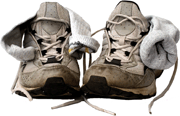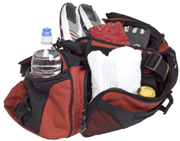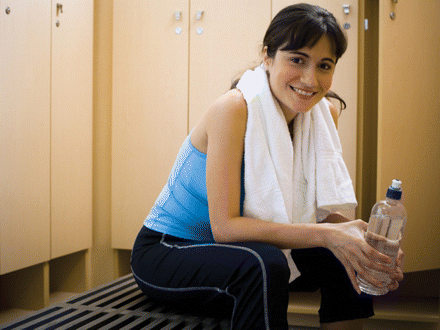You’re heading to the community center for an evening game of basketball. Your energy is waning, but on the court you’ll be surrounded by your energetic hoop buddies. You’ll also be surrounded by germs.
From bacteria to viruses to fungal infections, gyms, locker rooms and health clubs are breeding grounds for all manner of bugs.
“Germs and bacteria are found everywhere, including gyms,” says Jack Foley, ATC, director of sports medicine at Lehigh University. “The last thing you want when exercising is to get ill from your gym or exercise facility.”
The nature of athletics exposes your skin to a wide range of infectious agents. According to the National Athletic Trainers’ Association, skin infections in athletes are extremely common.
From community centers to health clubs, millions of Americans go to gyms each year to play ball, use the exercise equipment and participate in classes such as yoga. But sharing equipment, towels, mats and even bar soap at the gym or in the locker room puts you and others at risk for some common skin ailments such as athlete’s foot, jock itch, ringworm and staph.
Photos courtesy iStockphoto: Shoes by Thomas Brostrom; gym bag, William Howell; basketball game, Gary Milner. Woman photo courtesy Getty Images.
Aim for clean machines
The spray bottles and paper towels provided at gyms are intended to keep you healthy, not to keep the cardio machines shiny. Before and after using a machine, disinfect the places that will be — or were — in contact with your body, such as elliptical handlebars or the bike seat.
“A quick wipe is sufficient,” says William Schaffner, MD, an infectious disease specialist at Vanderbilt University School of Medicine.
“A little forethought and you can do these things automatically.”
The most serious germ lurking in locker rooms and gyms is methicillin-resistant Staphylococcus aureus bacteria, or MRSA. According to the U.S. Centers for Disease Control and Prevention, MRSA is a type of staph bacteria that is resistant to certain antibiotics. Outside of hospitals, most MRSA infections are skin infections. More severe or potentially life-threatening MRSA infections can occur if the bacteria enters the body through cuts, scrapes and abrasions.
Contact sports put athletes at increased risk for a MRSA infection, and teenage boys — known to be less attuned to hygiene practices than girls — are at higher risk for such an infection, according to Schaffner, who advises that practicing good hygiene is important.
“There are any number of studies now that have indicated that boys and locker rooms need some hygienic revitalization,” Schaffner says. “Boys need to be encouraged after football practice or playing basketball to absolutely take a shower after those activities. Use soap. It sounds pretty elementary but it’s important. Do not share towels and make sure your uniform and your towels are washed or laundered frequently.”
Increase your shower power
If you choose to shower at the gym or in the locker room, never share towels and always use liquid soap — not a communal bar. Also, athlete’s foot is often contracted in locker rooms and communal showers where your bare feet come in contact with the fungus. According to the American Podiatric Medical Association, you can do much to prevent infection by practicing good foot hygiene at the gym. Wear flip-flops in the shower and avoid walking barefoot.
Cover cuts and scrapes
If you have minor skin abrasions but want to squeeze in a game of touch football, make sure your wounds are healing and not oozing, and cover them with clean, dry bandages.
“This works two ways,” Schaffner says. “You don’t want to pick up an infection and you don’t want to give an infection to anyone else.”
Pay attention for signs of skin infection and see a health care provider if you have symptoms such as redness, warmth, swelling and pus.
Be aware, but don’t be afraid
Even with infection risks, there’s no need to throw in the gym towel.
“These shouldn’t get in the way of your enjoying the experience and participating fully in it,” Schaffner says. “Going to the gym is a healthy activity and you ought to enjoy it. You are adding to your quality of life and this is a great way to maintain your health.”
Wash your hands before leaving
During your pick-up game or workout you’ll come in contact with lots of people and lots of equipment. If you plan to wait and take your shower when you get home, at the very least wash your hands before you leave the gym, Schaffner advises.
“Washing hands has more to do with the enthusiasm than the kind of soap,” Schaffner says. “Lather up abundantly and rinse thoroughly. That is excellent prevention.”
- Copyright The Nation’s Health, American Public Health Association





